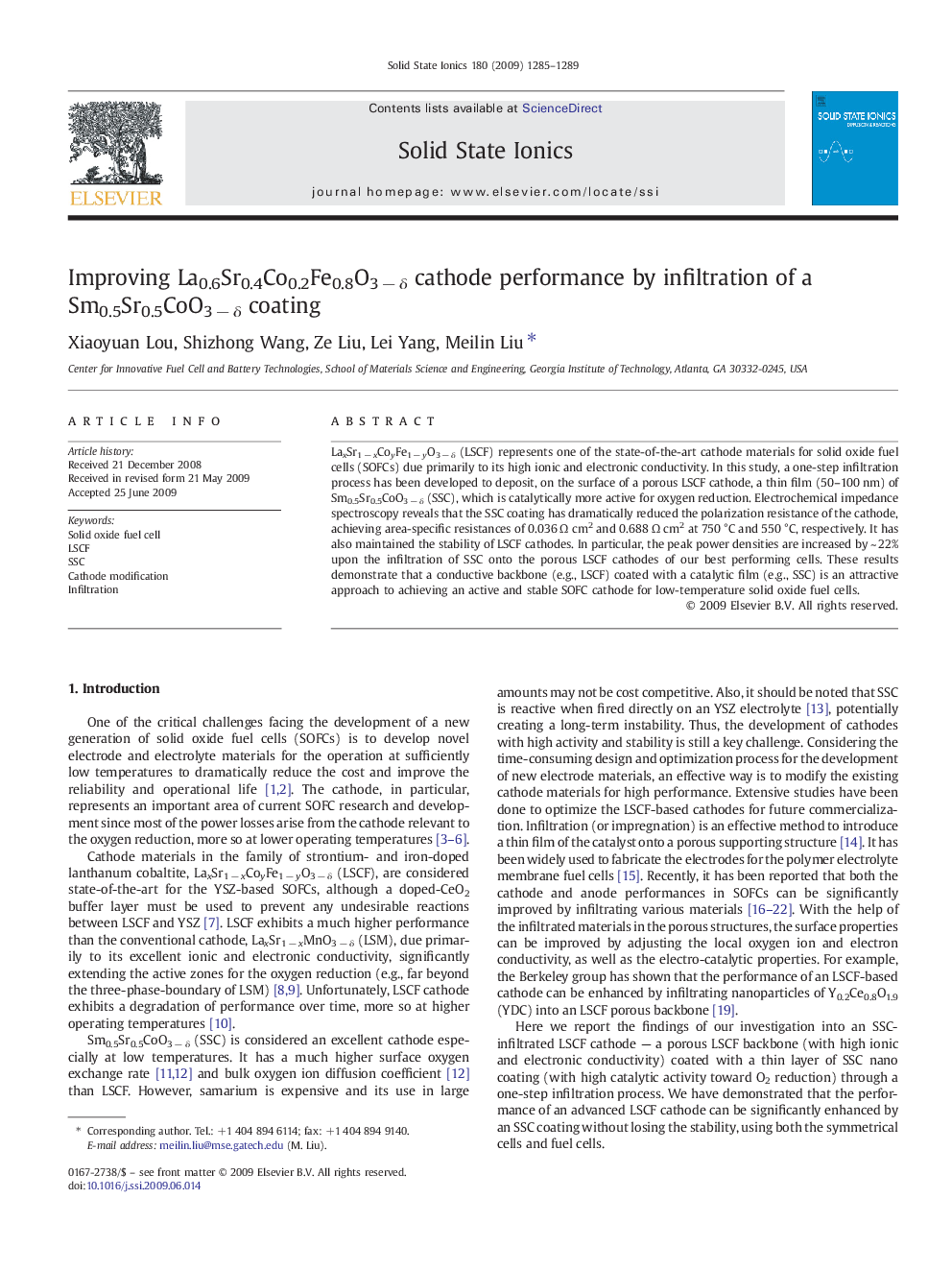| Article ID | Journal | Published Year | Pages | File Type |
|---|---|---|---|---|
| 1298564 | Solid State Ionics | 2009 | 5 Pages |
LaxSr1 − xCoyFe1 − yO3 − δ (LSCF) represents one of the state-of-the-art cathode materials for solid oxide fuel cells (SOFCs) due primarily to its high ionic and electronic conductivity. In this study, a one-step infiltration process has been developed to deposit, on the surface of a porous LSCF cathode, a thin film (50–100 nm) of Sm0.5Sr0.5CoO3 − δ (SSC), which is catalytically more active for oxygen reduction. Electrochemical impedance spectroscopy reveals that the SSC coating has dramatically reduced the polarization resistance of the cathode, achieving area-specific resistances of 0.036 Ω cm2 and 0.688 Ω cm2 at 750 °C and 550 °C, respectively. It has also maintained the stability of LSCF cathodes. In particular, the peak power densities are increased by ~ 22% upon the infiltration of SSC onto the porous LSCF cathodes of our best performing cells. These results demonstrate that a conductive backbone (e.g., LSCF) coated with a catalytic film (e.g., SSC) is an attractive approach to achieving an active and stable SOFC cathode for low-temperature solid oxide fuel cells.
